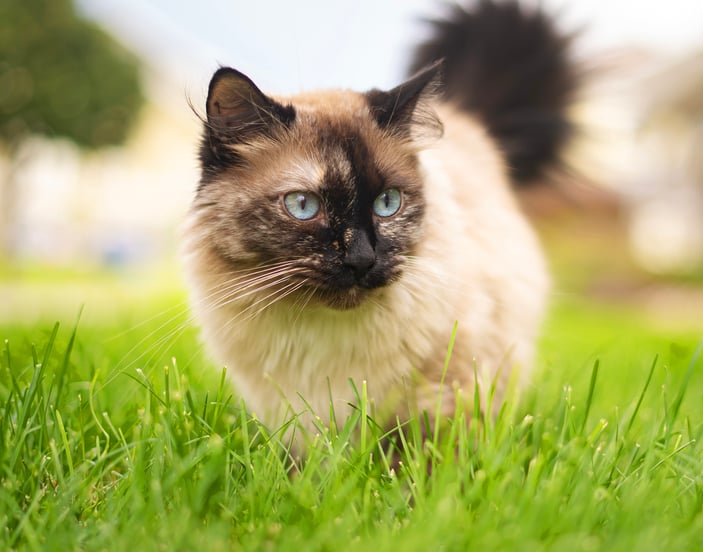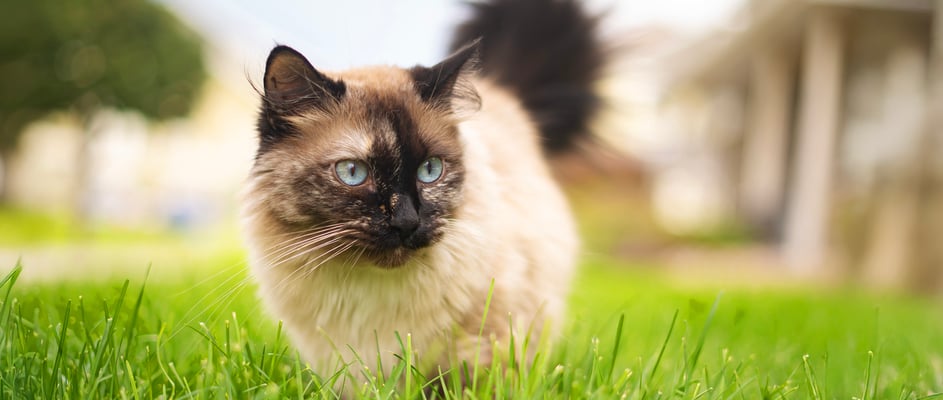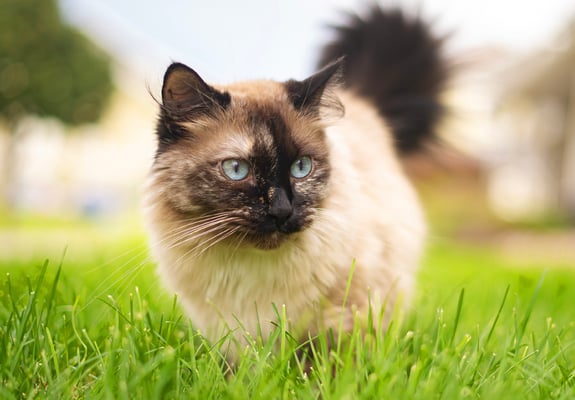The guide to owning a Ragdoll cat.
Looking to welcome a cat into your home but not sure where to begin? Welcome, you’re in the right place. Secure a no-obligation quote with Waggel to make sure your new friend gets the cover they deserve.
Jump to:
Stats at a glance.
History and origin.
The beautiful Ragdoll was initially bred in the 1960s by a breeder named Ann Baker in California.
She wanted a cat breed with a calm nature and a cuddly, “go limp” personality.
In time, these gorgeous felines took off in cat shows and gained fans among cat fanciers.
Ragdoll kittens are born nearly pure white. Their colour gradually appears, forming distinct points on their face, paws, tail, and ears.
Breeders soon discovered various patterns like colourpoint, mitted, and bicolour.
You might also see a lynx variant or rarer colours, including lilac.
Now, Ragdolls rank among the most affectionate cat breeds as they’re prized for their easygoing sweetness.
They can be found in many countries, with enthusiasts praising their dog-like devotion and snuggly temperament.
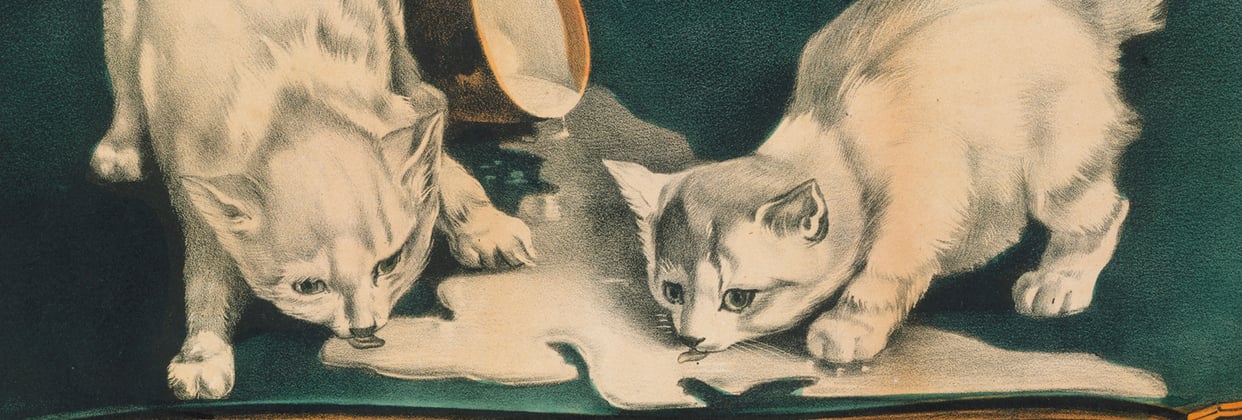

How much does a Ragdoll cat cost?
Ragdolls are as soft on your wallet as they are in your arms—well, relatively. A Ragdoll kitten from a reputable UK breeder usually costs between £200 and £1,600, with the price depending on things like bloodline, colour patterns, and whether they're neutered or vaccinated before adoption.?
Like Maine Coons, Ragdolls also have their own set of ongoing costs: grooming, quality food, and regular vet care (especially for heart-related issues like HCM).
They’re calm, affectionate, and beautifully low-maintenance—but they’re still a lifelong financial commitment, not just a one-off purchase.
Colours and patterns.
To cat lovers, the main types of Ragdoll cats include:
Colourpoint: Colour on the mask, ears, legs, and tail, with no white on these points.
Bicolour: Large patches of white paired with point colours, typically on the face and body.
Mitted: White “mittens” on the paws and often a white chin.
Lynx: Any of the above patterns can show faint tabby-like stripes.
A Ragdoll kitten is mostly white at birth, developing these markings as it grows.
Certain adult coats may lighten or darken, relying on factors like temperature and age.
Many Ragdoll owners feel these patterns, plus those big blue eyes, boost the cat’s “angelic” aura.


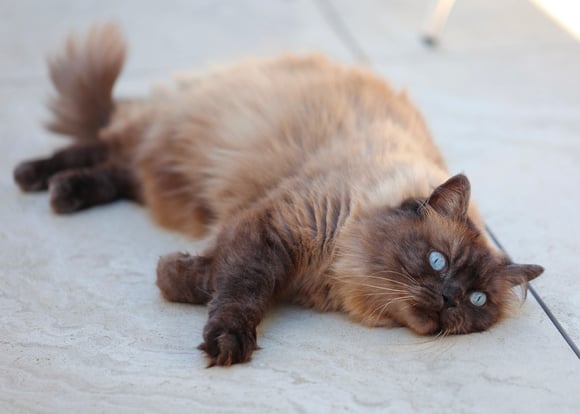


Temperament and personality.
Ragdolls are often called cuddly and gentle. They’re a social breed that tends to greet you at the door, follow you around, and even flop over for belly rubs.
When picked up, many will relax entirely, “Rag doll” style. They have a calm nature and rarely engage in frantic antics. However, this doesn’t mean they’re meek.
They can be playful, batting at toys or chasing laser pointers, especially with Ragdoll kittens.
They’ll thrive if you socialise them at a young age, so new faces or other pets won’t alarm them.
These kitties usually make great pets for families, especially those with children, thanks to their laid-back approach.
The Ragdoll breed does well with seniors or small kids, as Ragdoll cats make patient, low-drama companions.

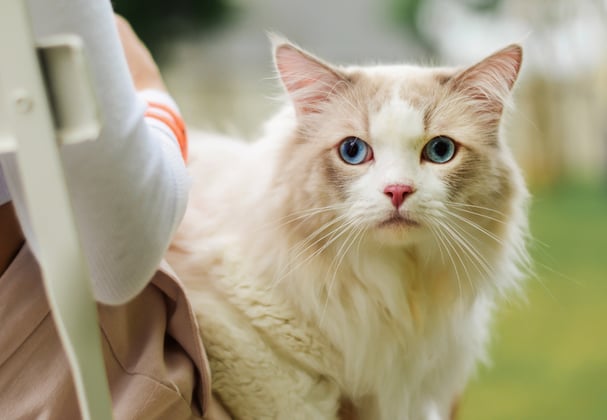
Health considerations.
Ragdolls are often robust, but there are a few common health issues you’ll want to note:
Talk to your vet early if you see any suspicious symptoms.
Annual check-ups help catch problems before they escalate.
Also, taking out pet insurance can save heartbreak and finances if something does crop up.
Try exploring our Ragdoll Cat Insurance page for more info.
Living with a Ragdoll cat.
Ragdoll cat care generally requires a bit of planning. They’re definitely indoor cats for the most part, as they’re not the best at defending themselves or climbing fences with agility.
If you like a countertop buddy, be prepared: Ragdolls might jump up to watch you cook, though they’re not as acrobatic as some.
Their calm nature leads them to lounge on sofas or your lap. They also enjoy coexisting with other friendly pets.
Having a home with other Ragdolls or laid-back animals helps keep them company. If you need pointers on multi-pet introductions, see “How to Introduce a Puppy to a Cat”.
Ragdolls also love interactive play, even though they’re known to be relaxed. A simple wand toy can start a fun chase. Think of them as gentle “dog-like” cats who love your attention.
Grooming and care.
That semi-long, silky coat is easier to manage than you might expect, but Ragdolls still require regular grooming.
Plan on brushing at least twice a week to remove loose fur and avoid mats.
Brush: Use a soft bristle or slicker brush on the coat. Pay attention to areas behind the ears and under the armpits, where knots can form.
Baths: Rarely needed if you keep up with brushing. Some owners do a gentle bath occasionally, especially if show-grooming.
Nail care: Trim nails every few weeks. Provide scratching posts so your Ragdolls can keep nails healthy.
Dental health: A quick brush of the teeth or special dental treats can help fight tartar.
If you see bald spots or unusual hair loss, check out “Causes and Issues of Hair Loss and Alopecia in Cats”.
When in doubt, see your vet for professional advice.
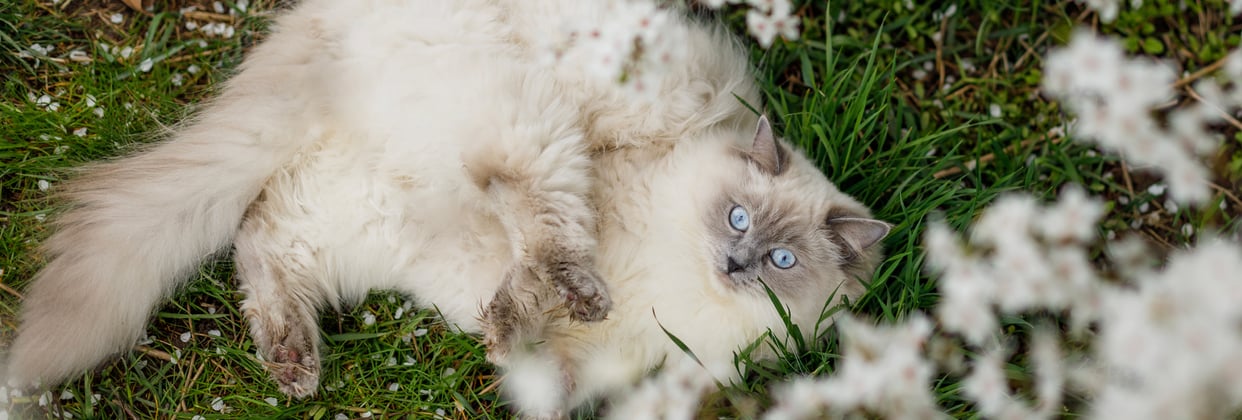

Diet and exercise.
Ragdoll cats are fairly large cat breeds, so portion control matters.
Offer quality dry and wet food with balanced nutrition. They can be prone to obesity because of their relaxed demeanour, so watch those treats.
Aim to keep them moving at least 20-30 minutes a day. Use a laser pointer or a feather toy to spark curiosity. Even a little climbing or chase can promote healthy weight and reduce boredom.
Ragdolls don’t typically need intense exercise, but they appreciate gentle, consistent play.
Bored Ragdolls may shed more or become lazy. Ensuring moderate exercise keeps them in tip-top shape.
Is a Ragdoll cat right for you?
If you’re seeking a cuddly, affectionate cat that’s easygoing and gets along well with children or seniors, the Ragdoll breed might be your dream.
They handle a calmer home best, though they can adapt to mild hustle and bustle.
Purebred Ragdoll cats can be an investment in terms of cost.
But for many, the reward is huge—these gentle giants can stay playful and sweet into adulthood.
They’re often considered ideal pets for owners wanting a super-snuggly, low-aggression cat.
Purchasing a Ragdoll from a reputable breeder helps ensure you start off with a healthy kitten.
If you’re adopting older Ragdolls, do ask about health history.
Either way, you’re likely to gain a faithful companion that watchers might call “the teddy bear of cats.”


Frequently asked questions.
Is a Ragdoll cat hypoallergenic?
No cat is entirely free of allergens. While Ragdolls have a low-shedding undercoat, they still produce dander.
People with mild allergies may manage better than with some double-coated breeds, but it varies by individual allergen sensitivity.
How do I choose a Ragdoll kitten?
Look for a reputable breeder who prioritises healthy lines and early socialisation.
Ragdoll kittens are born white, then develop colour over weeks.Check for bright eyes, playful curiosity, and a clean environment.You might also explore rescue groups that rehome Ragdolls.
Are Ragdolls good family pets?
Yes. They’re a social breed known for being affectionate and gentle.
They typically make great pets for children, seniors, or even pets who crave a calm companion.
Do Ragdolls get along with dogs?
Often, yes. Many Ragdolls adapt well to polite dogs, mirroring their easygoing nature.
Still, supervise early interactions to ensure mutual comfort.
Do Ragdoll cats need outdoor access?
Not really. They’re typically content as indoor cats, especially as they have fewer survival instincts than some active breeds. Many owners prefer safe indoor play and occasional supervised outdoor time on a harness, if at all.
Pet insurance for Ragdolls.
With their gentle nature and silky coats, Ragdolls deserve the very best care. Pet insurance from Waggel gives you peace of mind that you can handle the unexpected, from vet bills to long-term conditions. Get a quote today and give your Ragdoll the protection they need to thrive.
